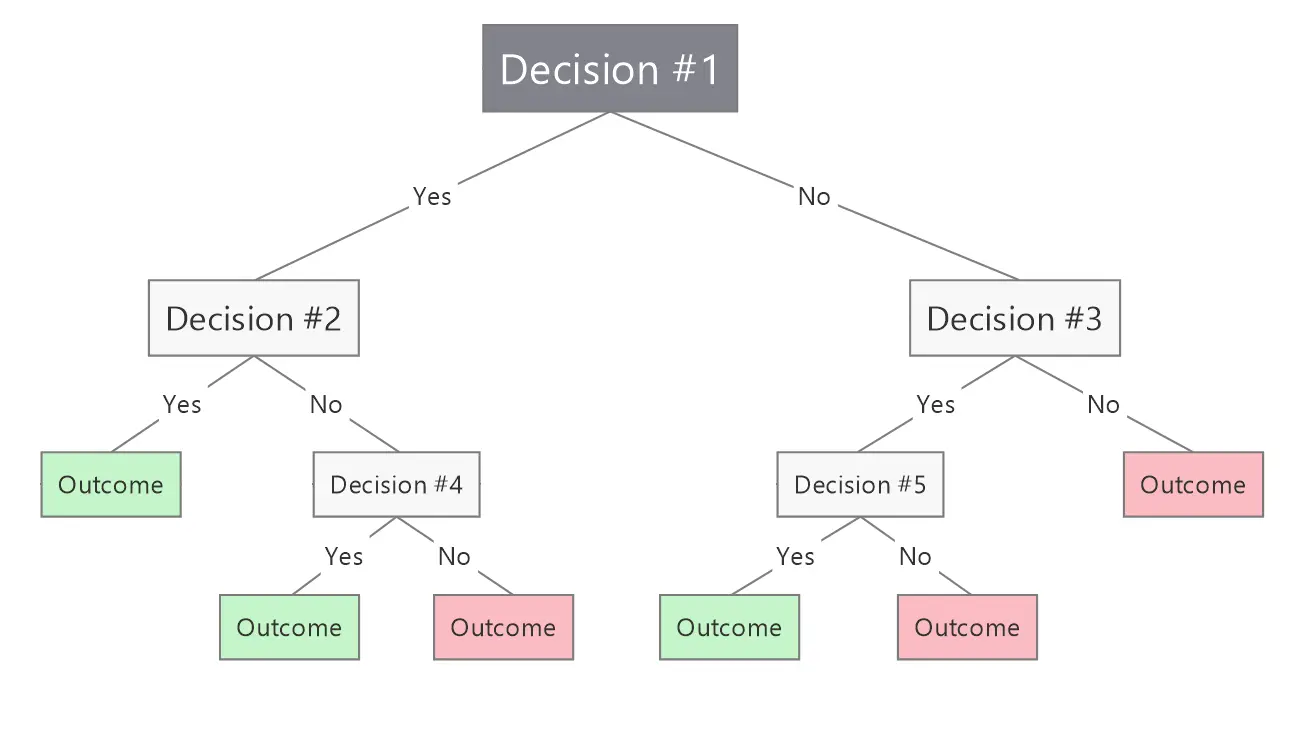

In the realm of machine learning and data science, a decision tree stands tall as one of the most popular and versatile algorithms. They are powerful tools for both classification and regression tasks, providing a clear and interpretable structure for decision-making. In this comprehensive guide, we will delve into the world of decision trees, exploring their fundamentals, terminologies, and applications, and providing illustrative examples. By the end of this journey, you’ll have a solid understanding of decision making trees and how they can be applied in real-world scenarios.
A decision tree (D-tree) is like a flowchart used to make predictions in machine learning also known as Decision Making Tree. Each box in the chart represents a decision based on input, leading to different outcomes. It keeps making decisions based on the best way to split the data until it reaches a stopping point. Decision Trees can work with different types of data and are good for tasks like classification and regression.
They’re easy to understand and can handle complex relationships between variables. But sometimes they can get too detailed. So, predicting too closely to the training data and not performing well on new data. To fix this, techniques like pruning or using multiple trees together can help.
A decision tree model is like a smart guesser made by teaching a computer using a D-tree method. First, it learns from a bunch of examples we give it. Then, it can guess what might happen with new examples we haven’t shown before. These models are great because they’re easy to understand, which is handy when we want to know why it made a certain guess.
Before diving deeper, let’s familiarize ourselves with some key terminologies of decision making tree:
A decision tree diagram visually represents decisions and their possible consequences. It’s an effective tool for analyzing choices, outcomes, and potential paths forward.

Here’s a simple picture showing how to decide whether to play tennis based on the weather. So, it begins with a main choice about the outlook (sunny, overcast, or rainy). Then, it splits into different choices depending on the weather. Each choice leads to a final decision: play or don’t play tennis.
You can make D-trees by hand, but there are also computer programs that make it easier. These programs help you see the tree and make it better. They can also check if the tree works well and make it even better. Some of the best decision tree software options include
A decision chart is like a picture that helps make decisions, often used in business or managing projects. It’s a bit like decision trees but simpler, focusing more on steps and results than on lots of branches. People use them to make hard decisions easier and get things done faster.
Decision trees are a popular and versatile tool in machine learning and data analysis for several reasons:
Let’s illustrate the concept of a decision making tree with a couple of examples:
Learners Also Read: What are Searching and Sorting Techniques in Data Structure?
In conclusion, decision trees are helpful in machine learning and making decisions in different industries. This guide explained the basics of decision making trees and their terms. As well as how they’re used with examples like predicting credit risk and dividing customers for marketing. They’re great because they’re easy to understand and there are tools to help, making them useful for everyone. As businesses aim to make better decisions, decision trees become even more important. For guiding them toward success in a world driven by data.
Ans. Decision trees help decide by showing paths and results, often used in data analysis. Fishbone diagrams help find reasons for a problem by showing possible causes branching from the main issue. It focuses on choices, while fishbone diagrams focus on causes.
Ans. Decision trees show choices and results in a tree-like way, good for guessing outcomes in data. Flowcharts show steps in a process, useful for explaining how things work. It focuses on choices and results, while flowcharts focus on steps and actions.
About The Author:
The IoT Academy as a reputed ed-tech training institute is imparting online / Offline training in emerging technologies such as Data Science, Machine Learning, IoT, Deep Learning, and more. We believe in making revolutionary attempt in changing the course of making online education accessible and dynamic.

Digital Marketing Course
₹ 9,999/-Included 18% GST
Buy Course₹ 29,999/-Included 18% GST
Buy Course